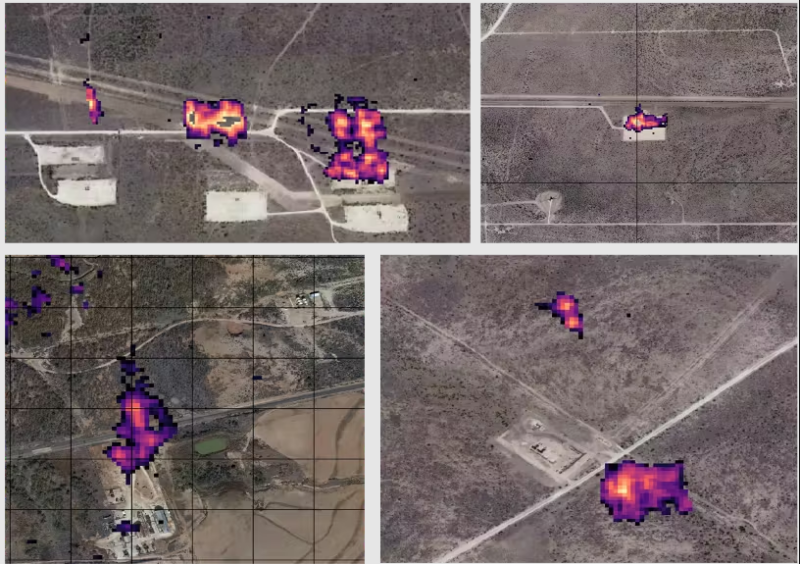Latest News

Orbital Sidekick releases hyperspectral insights from its first three satellites. Photo: OSK
Orbital Sidekick (OSK) shared the first images from its three hyperspectral satellites launched on two SpaceX rideshare missions earlier this year.
The satellites are the first in the GHOSt constellation, which stands for Global Hyperspectral Observation Satellite, and can capture 472 bands of light across the electromagnetic spectrum, in 8 meter resolution.
The company shared images of methane plumes the satellites detected, with yellow indicating high concentrations of methane and purple indicating lower concentrations. OSK said onboard AI processing identifies the chemical composition of methane and how concentrated it is to detect potential leaks.
OSK is initially focused on monitoring oil and gas pipeline infrastructure, looking at potential leaks around oil well pad infrastructure. Before launching satellites, the company deployed aerial scans using GHOSt’s hyperspectral sensors and monitored 12,000 miles of pipeline, flagging 100 suspected methane leaks in 2022.
“In order to detect leaks early and prevent them altogether, energy infrastructure companies need accurate information about their pipelines, and they need it in real time. We leverage our proprietary hyperspectral data and satellites to continuously monitor pipelines for our partners,” the company said in an Aug. 23 release.
OSK plans to add three more satellites to its GHOSt constellation by 2024.
Get the latest Via Satellite news!
Subscribe Now